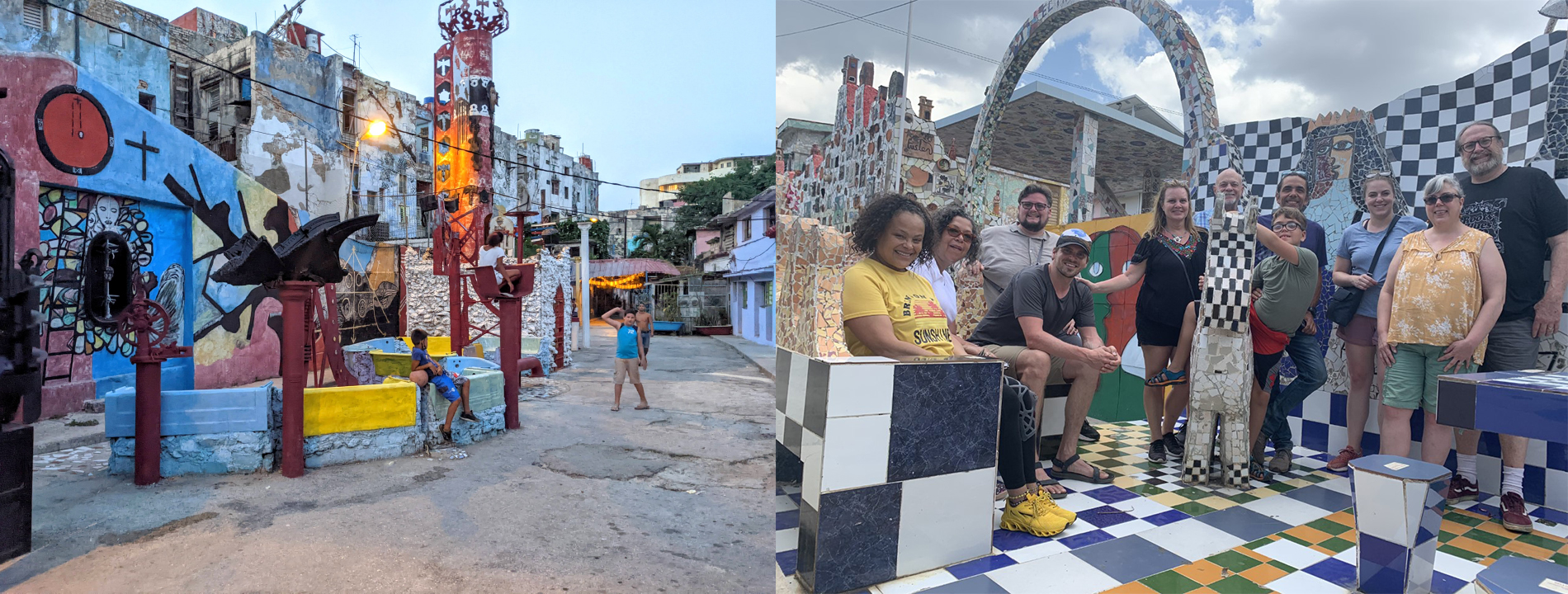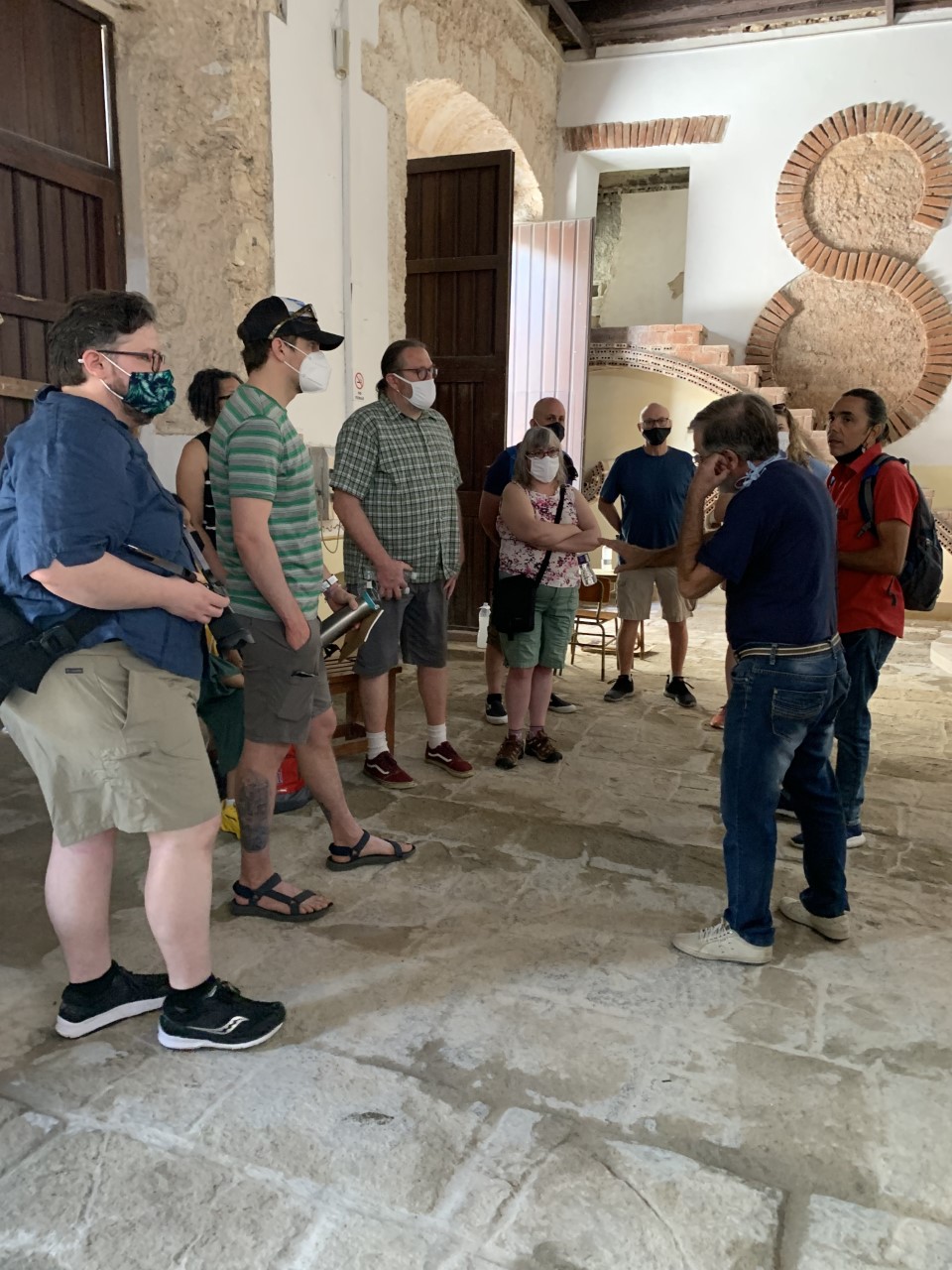Cuba immersion trip highlights similarities between cultures

It took more than a year of waiting, thanks to COVID-19, but this spring, a group of University of Detroit Mercy students were finally able to travel to Cuba as part of a short-term study abroad program.
To students like Tammie Perry, the wait was worth it when she and several other Detroit Mercy students arrived in Havana.
For Perry, who recently graduated from the School of Architecture & Community Development’s Master of Community Development (MCD) program, it was the social connections that really stood out.
The friendships formed in Cuba, both with her MCD cohort group and with a family in Havana who shared time with the group while there, were most meaningful.
 “The family in Cuba welcomed us like we were returning for a family reunion,” Perry wrote in a reflection following the trip. “They hosted us for dinner shortly after we arrived, and I looked forward to every visit with them. The welcome and engagement throughout the week was unparalleled. When I left Cuba, I felt like I was leaving family.”
“The family in Cuba welcomed us like we were returning for a family reunion,” Perry wrote in a reflection following the trip. “They hosted us for dinner shortly after we arrived, and I looked forward to every visit with them. The welcome and engagement throughout the week was unparalleled. When I left Cuba, I felt like I was leaving family.”
Fellow MCD student John Kraus saw the trip as an opportunity to learn about architecture, historic preservation and asset-based community development.
“While there, my eyes were opened to a wide range of socioeconomic initiatives and programs that were each unique and intergenerational in scope, and the ways in which people can collaboratively contribute to a more sustainable future,” he wrote. “Residents can feel as if their voices are being heard, represented, and respected.”
While Cuba might evoke images of vintage cars and thoughts of the Cold War for many in the United States, Detroit Mercy students who travel to Cuba were focused on making friends, improving their Spanish, mapping cultural assets and tracking how many UN sustainability goals Cuba has accomplished despite a six-decades-long embargo.
Despite the lack of material goods and building supplies, Cuba is a leader in historic preservation and sustainability. The island nation boasts nine UNESCO Cultural Heritage sites and maintains some of the most well-preserved wetlands and rainforests in the western hemisphere.
Students learn about these in a Cuban history and culture class prior to the trip, and they witness projects in action from the time they land. They journal and discuss activities, which include visits to schools and community centers, cultural heritage sites and city planners and social workers. They learn about social considerations when buildings are rehabbed and about environmental considerations in the city and rural locations.
At a visit to an organic farm on the outskirts of Havana, participants learned about cooperative farming, pesticide-free farming, and identified plants grown to feed local communities.
Most visits to Cuba include stops at community centers and schools, where participants interact with seniors and children. This year, students learned in smaller forums about Cuba’s education and healthcare systems, its high literacy rate, low infant mortality rate, and the ways Cubans accomplish this with few external resources.
In fact, the deciding factor for many students deciding whether to take the trip was Cuba’s successful fight to control COVID-19. When the Cuban government announced its borders would reopen to travelers from the United States, more than 80% percent of Cuban adults had received three or more doses of the vaccine, with numbers approaching 90% by the time the students arrived.
The program has included students and faculty from multiple disciplines, as well as alumni. To synthesize their experiences while there, all participants focus on HOPE aspects — human, organization, physical (environmental) and economic — of their experience, as well as social justice and sustainability. While these principles undergird the MCD program, they are interdisciplinary and inclusive, creating a cohesive and holistic experience for all while there.
This year, MCD graduate students Iva Williams and Alan Devlin integrated a storytelling project while in Cuba as an extension of their capstone project developed earlier in the year as part of a five-member capstone team, whose research in the MCD program this past year focused on the impact of storytelling on community engagement.
For Williams, the story of Cuba was one that resonated spiritually and included self-examination.
“During my trip, I experienced a hard reality check about personal over-indulgence and disregard for excessiveness,” she wrote in a reflection. “In Cuba, nothing goes to waste: bottles are painted and decorated to enhance a table; tree bark is burned to create natural charcoal and used as garden pesticide; table scraps are plated on the street to feed wandering pets. My short journey to Cuba brought extreme clarity to careless habits we are conditioned to through excess that is often exacerbated by technology and modern conveniences. The kindred spirit of the Cuban people is a vibrant resilience, one that rests on ‘just enough.’ My biggest take away was that when we wake up in the U.S., many of us look at our cell phones. When Cubans wake up in the morning, they look for each other.”
For John Kraus, it is the visible celebrations of cultural heritage, creative transformation of the built environment, and the people of Cuba that create lasting imprints.
This year marks a decade of University-related travel to Cuba. Since 2012, Detroit Mercy students have traveled to Cuba due to the loosening of federal restrictions reinstating educational travel to Cuba. Dozens of students have been able to take advantage of generous grants awarded by Jamie Dylenski, a College of Liberal Arts & Education alumna who established grants for CLAE majors and minors to study in CLAE-based programming abroad, and her husband Robert. Students from other disciplines can access other grants to assist with travel costs.
Program coordinator Lara Wasner said the decade has been marked by U.S. administrative changes governing legal travel to Cuba.
“We have been fortunate that educational travel has remained one of the legal categories for travel to Cuba,” Wasner said. “The history and relationship between our two countries is more complex and interesting than many are aware of. We want to be more than travelers, we try to be good stewards. Every group traveling to Cuba creates a dynamic educational experience and an opportunity to build bridges through mutual understanding and diplomacy.”
She says focusing on a common heritage is more meaningful and constructive than focusing on what separates people.
“Traveling to Cuba changes perceptions and offers pathways to understanding one another that are greater than a 60-year embargo and the 90 miles of water that separate our two nations,” she said.
